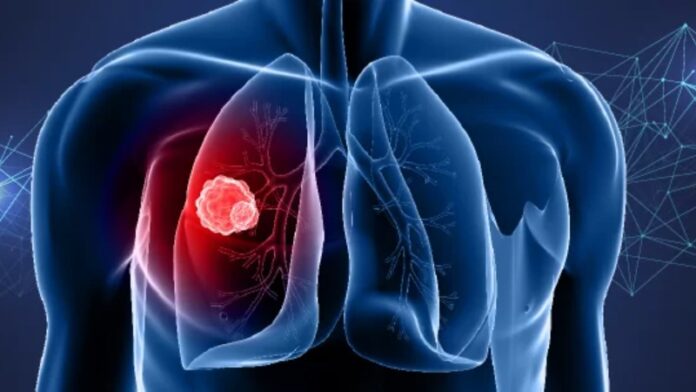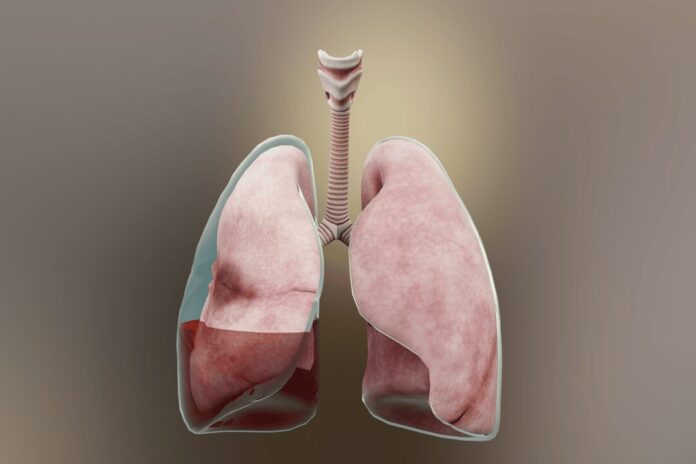Asbestos, once dubbed the ‘miracle mineral’ for its fire resistance and durability, has left a dark legacy in its wake. With its widespread use in construction and manufacturing, many unknowingly faced exposure to this mineral and its hazardous effects. As the scientific community and public became more informed about these dangers, the once-heralded substance started being recognized as a silent killer.
Chronic asbestos exposure can result in various health complications, ranging from non-cancerous illnesses to life-threatening conditions. This article delves into nine health effects of asbestos, ensuring you are armed with the knowledge to understand the dangers and the support available for affected individuals.

1. Mesothelioma
Mesothelioma is a daunting diagnosis that can disrupt lives. This cancer quietly develops over decades, frequently going undetected until it has progressed, and it is primarily caused by asbestos exposure. Common symptoms include chest pain, fatigue, and difficulty breathing.
As many grapple with this diagnosis, they also confront the anguish of knowing their ailment resulted from avoidable exposure. Legal avenues have developed in response to the awareness of their suffering and the negligence involved.
Many victims and families, amidst the turmoil of the disease, find solace in pursuing legal justice. Notably, a significant number of affected individuals access compensation through mesothelioma trust funds. This can help them seek some relief during challenging times.
2. Asbestosis
This lung condition directly results from breathing in dangerous asbestos fibers and grows over time. When these fibers enter the lungs, they don’t leave quietly. Instead, they agitate the delicate lung tissues, causing them to scar over time. As the disease progresses, many suffer from breathlessness, a persistent tightness in their chest, and unsettling sounds when they breathe.
The heartbreaking truth is there’s no magic cure for asbestosis. However, modern medicine offers treatments that can provide relief, helping those affected to manage the challenges and reclaim some comfort in their daily lives.
3. Lung Cancer

Lung cancer, a dreaded diagnosis, mostly ties back to smoking. Yet, there’s another culprit on the scene: Asbestos. The union of smoking and asbestos is dangerous, amplifying the odds of falling prey to this formidable disease.
The signs of this illness are distressingly common. Persistent coughs, nagging chest pain, and unexplained weight loss often emerge as red flags. It’s essential to be aware of these risks and remain vigilant. Early detection can make all the difference.
4. Pleural Plaques
While many diseases raise alarms with evident symptoms, pleural plaques are more discreet. These thickened tissue patches appear on the pleura, which is the protective lining of our lungs.
It’s like finding an unexpected mark on a favorite shirt – it doesn’t harm the shirt’s function but tells a story. In this case, that story is one of asbestos exposure. These plaques are significant even if they don’t disrupt daily life or become malignant.
They wave a cautionary flag, nudging individuals to be aware of their past environment and, if needed, consult with health professionals to ensure broader lung health.
5. Pleural Effusion

Pleural effusion is like an unwanted pool of water in a place where it doesn’t belong. Imagine two smooth surfaces gliding over each other. Now, imagine too much lubrication between them. That’s the situation with pleural effusion, where excess fluid gathers between the two layers of the pleura, the lung’s protective lining.
Asbestos exposure is one of the culprits behind this condition. Those who suffer from it may find themselves gasping for air or grappling with chest pain. Fortunately, medical interventions exist that can drain this unwelcome fluid. But even after successful treatment, pleural effusion can make unexpected comebacks. So, make sure to get regular check-ups for optimal health.
6. Ovarian Cancer
Traditionally seen through a lens of genetic or hormonal factors, ovarian cancer casts a wary eye on another potential instigator: Asbestos. Recent research is shedding light on the disturbing link between this hazardous material and the risk of ovarian cancer.
Some scientists theorize that harmful asbestos fibers journey to the ovaries via the reproductive tract or other pathways. The connection, while significant, is still unfolding. As awareness grows, the medical community pushes for more studies on the subject. Knowledge can empower individuals to seek timely medical advice and treatments.
7. Laryngeal Cancer

Research points toward a troubling correlation. Individuals who have interacted with asbestos might face a heightened risk of developing cancer in their larynx. The stakes rise even higher when this exposure is combined with smoking. Much like the double jeopardy faced by lungs, the voice box, too, grapples with dual threats. Both tobacco and asbestos wage a silent war against it.
8. Asbestos Warts
Asbestos warts might sound like something from a bygone era, but they are a very present-day concern for those who have had direct contact with asbestos. Imagine tiny fragments, like stubborn splinters, piercing the skin and refusing to come out.
Over time, the skin reacts to these trapped asbestos fibers by forming protective growths. These growths, or warts, stand as silent markers of an encounter with this hazardous material. Thankfully, they are not malignant, which means they aren’t cancerous.
Yet, their very presence should serve as a wake-up call. Anyone spotting such warts on their skin should seek medical advice for removal.
-
Chronic Obstructive Pulmonary Disease (COPD)
Chronic Obstructive Pulmonary Disease is a respiratory condition that significantly affects a person’s ability to breathe. While many associate this ailment with long-term smoking, asbestos exposure can also play a notable role in its development.
Breathing in asbestos fibers can lead to lung tissue damage, which in turn accelerates COPD’s onset. As these fibers embed themselves in the lungs, they can intensify existing COPD symptoms. Those exposed to asbestos might find themselves coughing or feeling short of breath more frequently and sooner than anticipated.
Conclusion
Individuals, especially smokers, who have been in asbestos-rich environments should prioritize regular health evaluations. Early detection and intervention can drastically improve and help extend one’s life. Awareness of these combined risks underscores the importance of avoiding asbestos and understanding its broader health implications.






